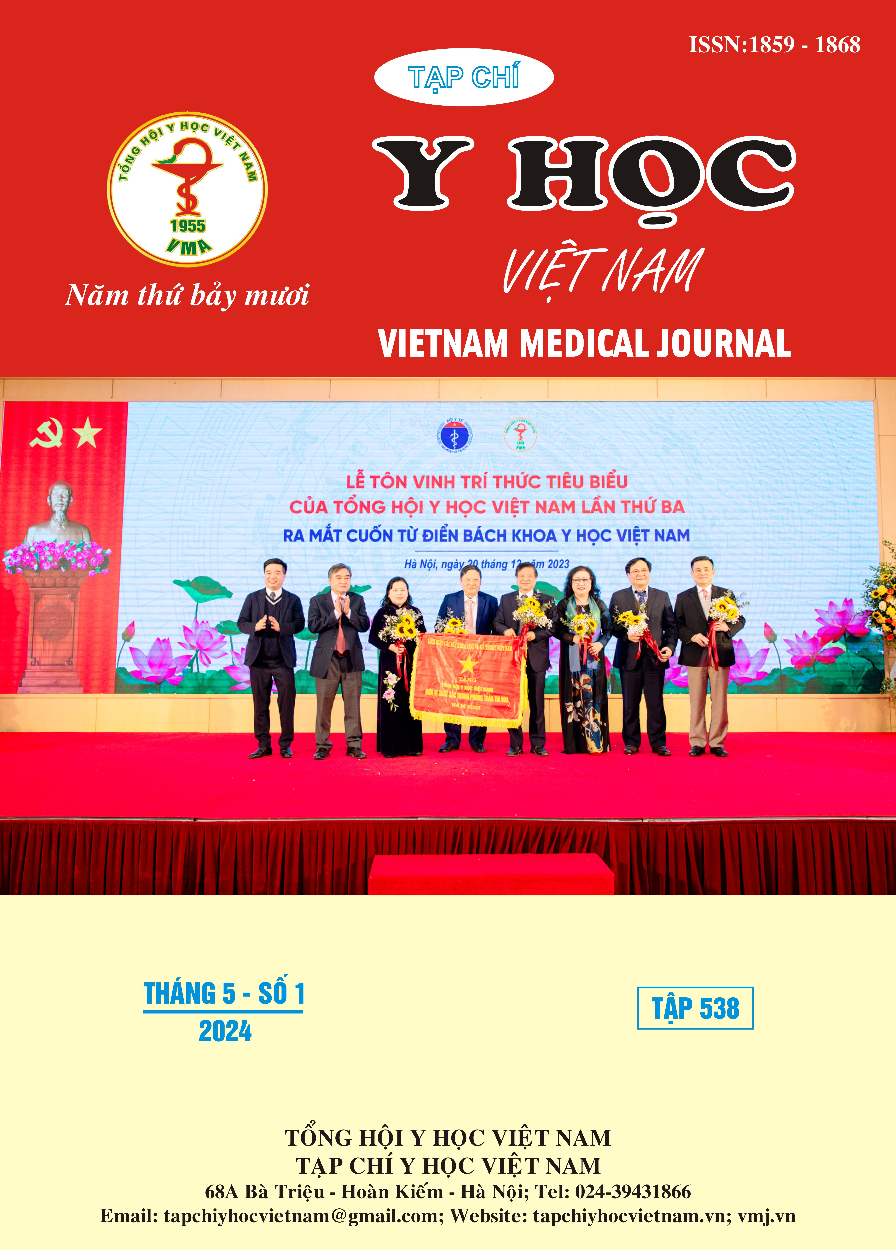RESULT OF SURGICAL TREATMENT OF UPPER THORACIC SPINE INJURIES AT VIET DUC UNIVERSITY HOSPITAL
Main Article Content
Abstract
Objective: Evaluate the results of surgical treatment of upper thoracic spine injuries at Viet Duc University Hospital. Methods: Research patients diagnosed with spinal injuries from T1 to T5 at the spine surgery department of Viet Duc university hospital from 6/2018 to 6/2021. Results: Average surgery time was 128.1 ± 40.3 minutes, blood loss during and after surgery: 404.4 ± 428 ml. Complications: pressure sores in 5 patients (21.7%), surgical wound infection in 1 patient (4.3%); There were 03 patients who died 1 year or more after surgery. Neurological recovery according to AIS, evaluating the recovery of 52.17% of patients with neurological recovery according to AIS for 6 months or more, of which 2/14 patients (14.3%) recovered from AIS A to AIS B, 1/14 patients (7.1%) recovered from AIS A to AIS C, 6/23 patients (26.1%) patients with injury levels AIS B, AIS C, AIS D all recovered. converted to AIS E. General results according to Macnab criterial: 47.8% of patients after surgery had good results, 34.8% excellent results, 13% poor results, 4.3% fair results. On x-ray, the kyphosis angle of the vertebral body and the kyphosis angle of the injured area are improved before and after surgery. Vertebral kyphosis angle: before surgery it was 12.780, after surgery it was 7.940. There was an improvement in the kyphosis angle before and after surgery. Kyphosis angle in the injured area: before surgery it was 22.70, after surgery it was 17.350. Conclusion: Surgical treatment of upper thoracic spine injuries gives certain feasible results in nerve damage recovery and post-operative care in patients.
Article Details
Keywords
upper thoracic spine trauma, decompression and pedicle screw surgery
References
2. Theologis AA, Tabaraee E, Funao H, et al. Three-column osteotomies of the lower cervical and upper thoracic spine: comparison of early outcomes, radiographic parameters, and peri-operative complications in 48 patients. Eur Spine J. 2015; 24(S1):23-30. doi:10.1007/s00586-014-3655-6
3. Gattozzi D. Surgery for traumatic fractures of the upper thoracic spine (T1–T6). Surgical Neurology International. 2018; 9(1):231. doi: 10.4103/ sni.sni_273_18
4. Lê Văn Tuyền. Đánh giá đặc điểm hình ảnh chấn thương cột sống ngực - thắt lưng theo phân loại TLICS tại bệnh viện Việt Đức. 2017.
5. Lê Hoàng Nhã. Điều trị gãy cột sống ngực do chấn thương bằng phẫu thuật nẹp vít cuống cung. Luận văn thạc sĩ y học. 2016.
6. Nguyễn Văn Thạch. Nghiên cứu điều trị gãy cột sống ngực - thắt lưng không vững, không liệt tủy và liệt tủy không hoàn toàn bằng dụng cụ Moss Miami. 2007.
7. van Middendorp JJ, Hosman AJF, Pouw MH, EM-SCI Study Group, Van de Meent H. ASIA impairment scale conversion in traumatic SCI: is it related with the ability to walk? A descriptive comparison with functional ambulation outcome measures in 273 patients. Spinal Cord. 2009; 47(7):555-560. doi:10.1038/sc.2008.162
8. Spiess MR, Müller RM, Rupp R, Schuld C. Conversion in ASIA Impairment Scale during the First Year after Traumatic Spinal Cord Injury. :10.
9. Nguyễn Quang Huy. Đánh giá kết quả điều trị phẫu thuật chấn thương cột sống ngực bằng phương pháp bắt vít qua cuông tại bệnh viện Việt Đức. Published online 2010.
10. Esses SI, Sachs BL, Dreyzin V. Complications associated with the technique of pedicle screw fixation. A selected survey of ABS members. Spine (Phila Pa 1976). 1993;18(15):2231-2238; discussion 2238-2239. doi:10.1097/00007632-199311000-00015


